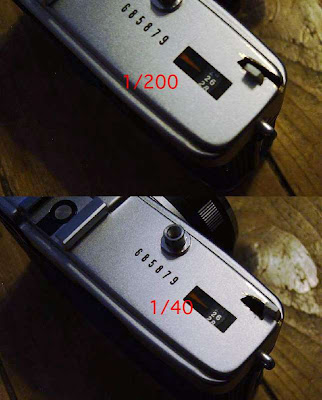The "Z-up 80 RC Limited Super Zoom High Precision Autofocus Camera" has a name that is very much longer than the zoom range of only 40-80mm. But the list of built-in features could be longer than the name. The camera seems to be a boy´s dream come true. On every side of the body there are some gimmicks to play with:

On the top you find the illuminating window for the finder rightlines on the left, the main switch and the shutter release on the right. In the middle the popup flash is placed.

Left side, zoom at 40mm.

Left side, lens fully zoomed out at 80mm. The flash zooms with the lens. Lower on the body there is the opening switch for the back.

On the bottom you find the battery door, the tripod mount and a little gizmo named "TILT". Flip it out and the camera is tilted upward ( approx. 20 degrees) when placed on a flat surface.

On the right side of the body there is the bulky handgrip, that contains the battery (2CR5 Lithium). Push the point of the grip that is marked "PUSH" and the remote pops out. On the side there is also the strap lug.

The back is the control station of the Z-up.
Top left the adjustable finder. Top right the zoom switch and the remote sensor. Under the finder the film cartridge window is placed. In the middle you find the big display for all the camera functions: frame counter, battery status, flash mode/+1,5EV backlight function; drive modes S, C, selftimer, remote; the modes for date imprint and setting the date/time. ME for multiexposures (up to 37 exposures on one frame!), TE for longtime exposures (max. 99h, 59m, 59s!!) and the INT mode for interval timing (max. 37 frames with a delay of 99h, 59m, 59s between each frame!!!)


On the front you see the lens, that has a orbicular cover, the front remote sensor, the finder and on the lower right the infinity switch.
The body is made of black, gold-spotted plastic, all letters are golden.





The finder shows parallax markings in red when the distance is in the macro range. Other distance marks are shown in red too.
The manual is now available on
butkus.org
























































